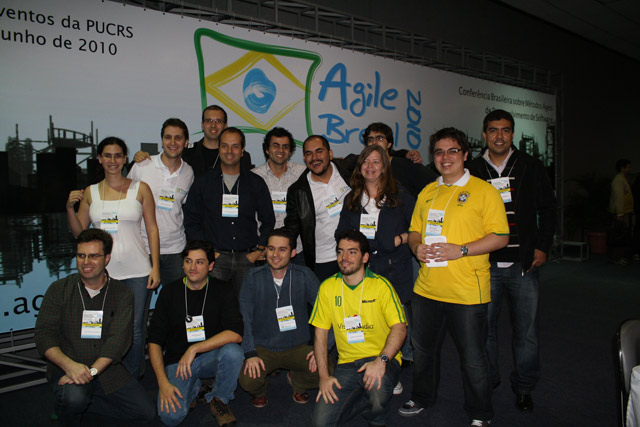Series: Agile Brazil 2010 | Part 3 of 6 > Complete coverage of Brazil’s first national agile conference
I’m in Porto Alegre right now, in the middle of Agile Brazil 2010 — the first national Agile conference we’ve ever had in Brazil. The energy here is different. No one’s just sitting through PowerPoints. People are moving between open spaces, jumping into lightning talks, scribbling on card walls, and grabbing each other in hallways to keep the conversations going.
It’s not just a conference. It feels like something is starting.
What Agile Brazil Is (And What It Isn’t)
This is more than just a group of developers and managers attending talks. It’s a living, breathing community in formation. And the organizers knew that — they leaned hard into creating interactions, not just sessions.
They brought in some of the heavyweights: Martin Fowler just walked past me in the corridor, Philippe Kruchten led a deep dive on architecture that challenged half my assumptions, and David Hussman made a room full of skeptics actually enjoy pair exercises. But it’s not about the guests — it’s about the people who showed up, from every corner of Brazil, ready to share and build.
I’ve met folks running Agile at banks, startups, universities, even city governments. Everyone’s figuring things out, and we’re doing it together. That’s rare. And powerful.
Writing This After My First Agile Talk
Earlier today, I stood in front of a room — maybe 25 people? — and for the first time, I spoke publicly about the Agile methods we’re experimenting with at UnP and SINFO-UFRN.
It wasn’t perfect. I was nervous, and I probably spoke too fast. But I told the truth:
- How we used XP and Scrum to run academic and institutional software projects
- What worked: clearer roles, more ownership, and shorter feedback loops
- What didn’t: uneven commitment, constant resets, and our struggle with true iteration
It felt important to say out loud: “We’re not experts. We’re learners.” And I think that message resonated.
On Building a Brazilian Agile Practice
A big theme running through the conference is this: Agile is not just imported process. It’s something we’re shaping — with our own challenges, our own rhythms, our own stories.
I’m sitting here next to people from Brasília, São Paulo, Recife, Porto Alegre. Everyone’s facing different constraints, different legacy systems, different team dynamics. But there’s a shared drive to make work better. To stop pretending we can control the uncontrollable. To try small bets. To build feedback into the system.
Agile here is not a consultancy buzzword — it’s a survival tactic for complexity.
And this conference is what happens when we stop asking for permission to share.
A Community of Practice in Real-Time
What’s striking is how open everyone is. You’d expect a bit more ego or competition, but there’s very little of that here. People are showing their work. Real boards. Real post-mortems. Real failures.
This is what a community of practice looks like in its earliest form:
- We’re not aligned on everything
- We’re not even sure what success looks like yet
- But we’re committed to learning in public, together
That’s a rare and beautiful thing.
Signing Off — But Just for Now
I’m heading to an open space on Agile in education. There’s a buzz about how universities can stop teaching theory in a vacuum and instead give students actual team experiences. I’ll probably jump in — we have stories from SINFO/UFRN that could add to that.
This post is my way of capturing the moment. Agile Brazil 2010 isn’t just where I gave my first talk — it’s where I realized we’re not alone.
We’re part of something in motion.
More soon.
Agile Brazil 2010 Series Navigation:
- Part 1: Hands-On XP Workshop
- Part 2: Story Mapping with David Hussman
- Current: Part 3 - My First Agile Talk
- Next: Part 4 - Retrospectives with Hugo Corbucci and Mariana Bravo
- Final: Part 5 - Guerrilla Coaching with Francisco Trindade
